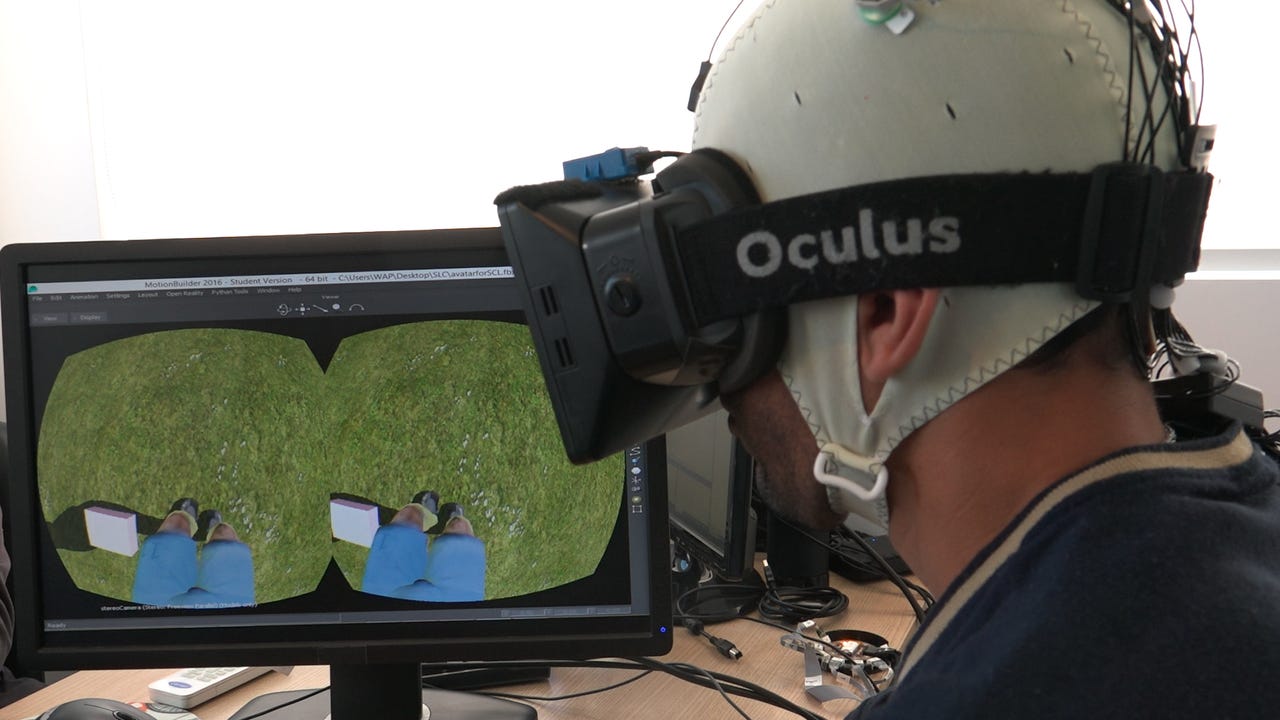Brain-controlled robots and VR help paraplegic patients feel and move limbs again


Patients used Oculus Rift to practice walking with avatars. Photo: AASDAP, São Paulo, Brazil
When the Walk Again Project was founded in 2013, an international consortium of scientists had an ambitious goal to teach paraplegic patients to walk using a brain-controlled robotic exoskeleton. But a year into the study, they were surprised to discover that the results were even better than they could have imagined: the patients could feel and move their legs again.
It's hard to say exactly which aspect of the therapy is responsible for the remarkable recovery, because the project involved a combination of three different setups. Additionally, the study only involved a small sample of eight patients. A comprehensive clinical trial will be necessary in the future, but the results are still quite ground breaking nonetheless.
All of the patients had been previously diagnosed as being completely paraplegic, but after long-term therapy with brain machine interfaces (BMIs), they all showed some improvement. After several years of being paralyzed, patients could feel and sometimes even move their limbs again. The treatment also improved bladder and bowel functions. One year after the start of the project, half of the patients recovered enough sensation and muscle control that their doctors upgraded their diagnoses from complete to partial paralysis.
The study is described in detail in Scientific Reports. During the training, the patients simulated movement with either virtual or physical assistance. While they envisioned moving their paralyzed limbs, they wore a special sleeve that provided haptic feedback, in other words, vibrations and pressure to indicate when thoughts translate to movement.
One aspect of the therapy used a combination of BMIs and virtual reality. The patients wore skull caps that linked their brain signals to an Oculus Rift headset. Then they visualized themselves walking, while they watched an avatar (simulated with Autodesk MotionBuilder) mimic their movements.
In a second setup, patients used a commercially available robotic walker, called Lokomat, which assists with walking therapy. With the Lokomat, patients are suspended in a harness over a treadmill and their legs are attached to a robot. The robot moves the patient's legs and makes them walk while a computer measures the body's response to movement.
The hallmark of the study was a brain-controlled robotic exoskeleton that was custom-designed for the project. Patients wore robotic leg supports that were controlled by brain signals sent via skull cap. The robotics legs also communicated back to the patients; electronic sensors located at key locations on the robot would feed information back to the person through vibrating pads.
In a video interview, Dr. Miguel A. L. Nicolelis said, "Brain machine interfaces in the future may not just be an assistive technology to restore mobility. The combination of brain machine interfaces with other therapies may lead to a new therapy."
WALK_AGAIN_PAPER_4_SD from Nicolelis Lab on Vimeo.